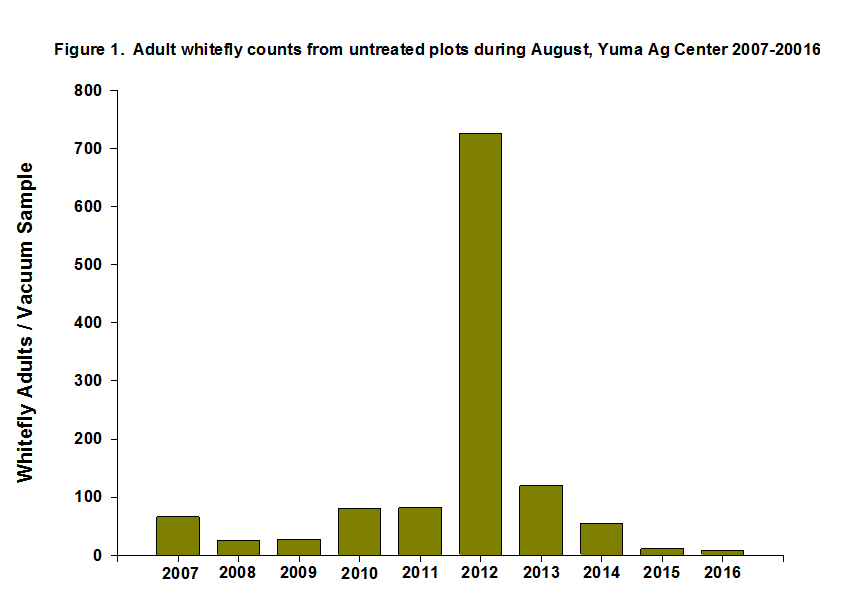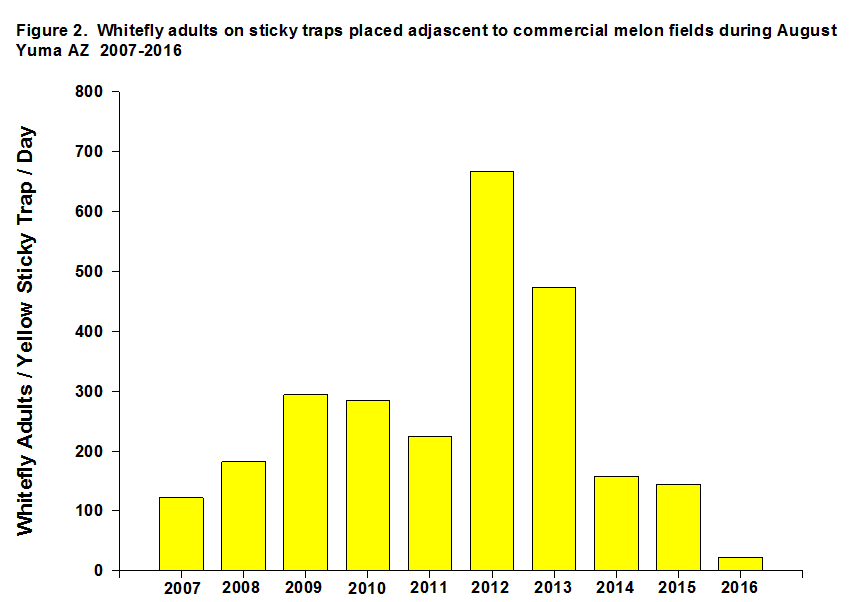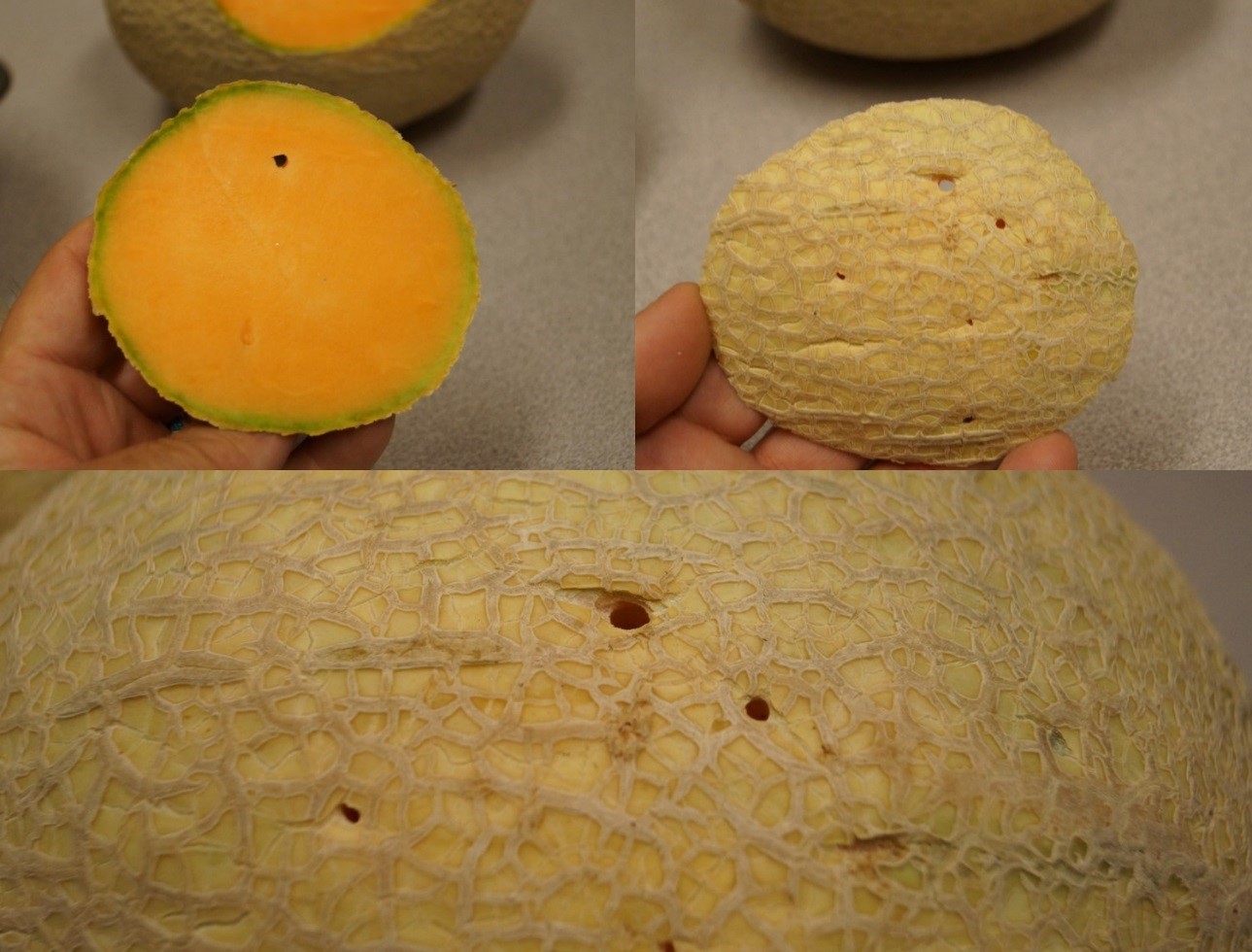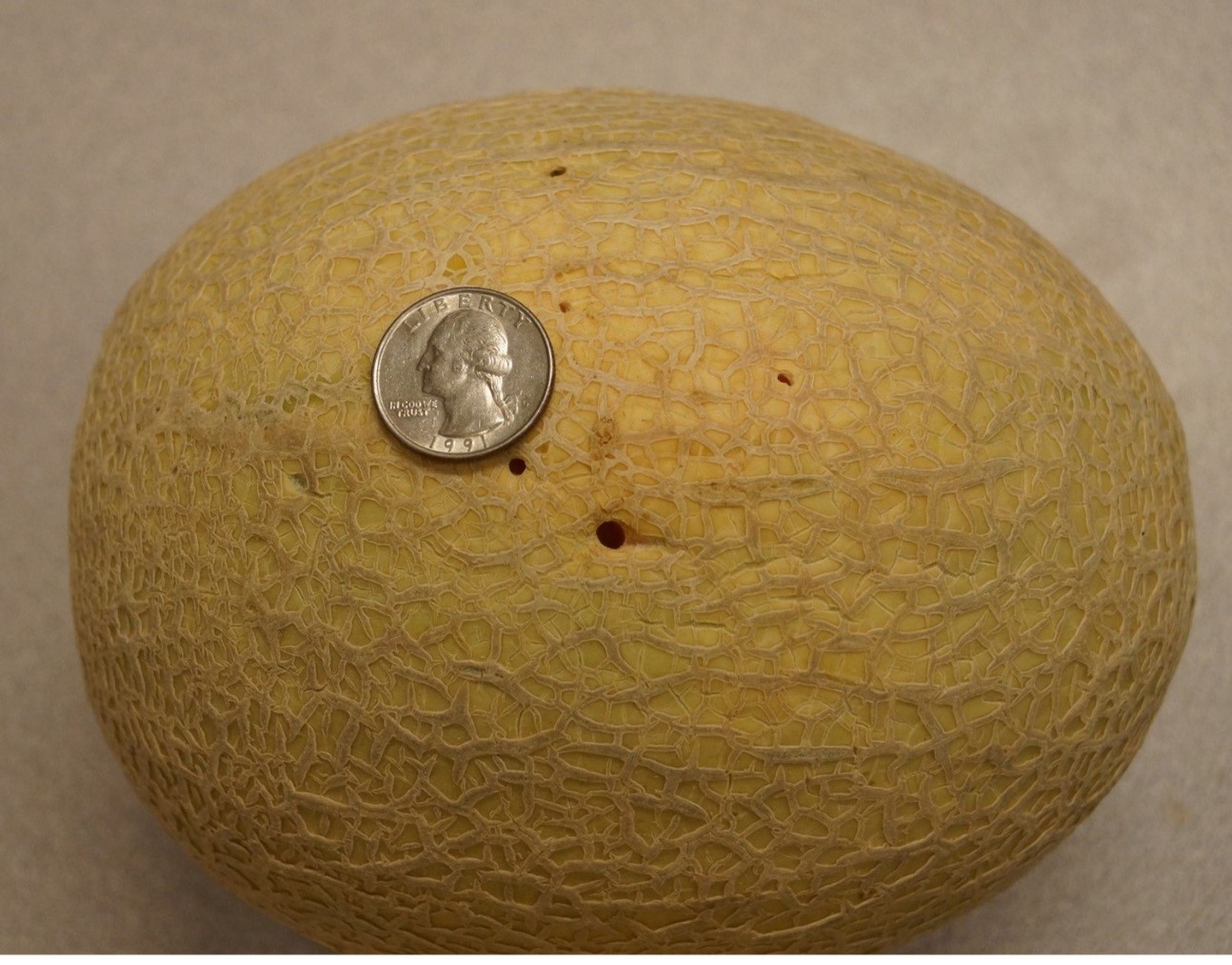
|
|
|
|

|
|||
|
|
|||
This has to be one of the lightest whitefly years we’ve experienced in many years. It started in the spring with lower than normal numbers on melons and continued with low-moderate numbers through the summer on cotton. So far, adult numbers have been unusually low on fall melons, even lower than what we observed at this time last year. For example, whitefly populations sampled in our untreated experimental plots during the last week in August at the Yuma Ag Center, show that adult numbers are the lowest we’ve observed in August since 2007 (Figure 1). Furthermore, numbers recorded from yellow sticky traps placed adjacent to commercial fall melons fields in August and early September in Yuma reveal a similar trend (Figure 2). There are exceptions though. One trap location in Roll has recorded very high whitefly numbers, and the field is equally heavily infested. In this case, it’s no surprise the trap is located about ¼ mile downwind of cotton that is still being irrigated. Nonetheless, you should still plan on whiteflies showing up in produce fields at some point in the next few weeks, particularly in the Yuma Valley where whitefly adults can often appear overnight. It is important that PCAs pay particular attention to early whitefly control on their newly planted produce crops. Prolonged feeding by adult whiteflies on seedling plants can cause stunted plant growth. If you observe honeydew on leaves in the absence of nymphs, then there are way too many adults on the plants. There are likely too many eggs being laid as well. PCAs have options for effective control of adults, and good knockdown can be achieved on lettuce and cole crops with 1) pyrethroids tank-mixed with Orthene, 2) Venom, Assail, or Scorpion (neonicotinoids), 3) Exirel (diamide), and 4) the newly registered Sivanto (buteolide). All of these products will provide 3-7 days or adult knockdown. To assess adult control under heavy migrations, try monitoring young leaves for the presence of light-colored eggs (newly laid) using a hand lens. Absence of newly laid eggs can be an indication that adults are not actively feeding on leaves or are dying before they can lay eggs. Furthermore, allowing adults to remain unchecked on small plants generally results in the development of large nymph populations that can cause significant growth/yield reductions in all produce crops. It is strongly recommended that growers apply a soil insecticide on lettuce and cole crops throughout September, and if the weather remains warm into mid-October. Soil applied imidacloprid (e.g., Admire Pro- 10.5 oz ; Alias 2F-24 oz; Wrangler 4F-12 oz) can provide control through thinning stage. Verimark applied at 13.5 oz/ac can provide excellent control of nymphs when applied at planting similar to the neonicotinoids. Once plants get larger, Movento, Exirel, Venom, Scorpion, Assail, Knack and Courier can provide effective control of nymphs. For more information on whitefly biology, management and insecticide alternatives see these reports: Whitefly Management in Fall Produce- 2016 and Insect Management on Desert Vegetables and Melons: Whitefly. |
|||
| Back | |||
|
For questions or comments on any of the topics please contact Marco Pena at the Yuma Agricultural Center.
|
|||
|
Home |
Cotton | Veggies |
Forages | Grains
| Citrus |
Crop x Crop Insects | Diseases| Weeds | Pesticides | Economics | News | Weather | Research | Photos | Contacts | General Info. Copyright © 2001 University of Arizona, College of Agriculture and Life Sciences Webmaster: Al Fournier (acis@ag.arizona.edu) |
|||




